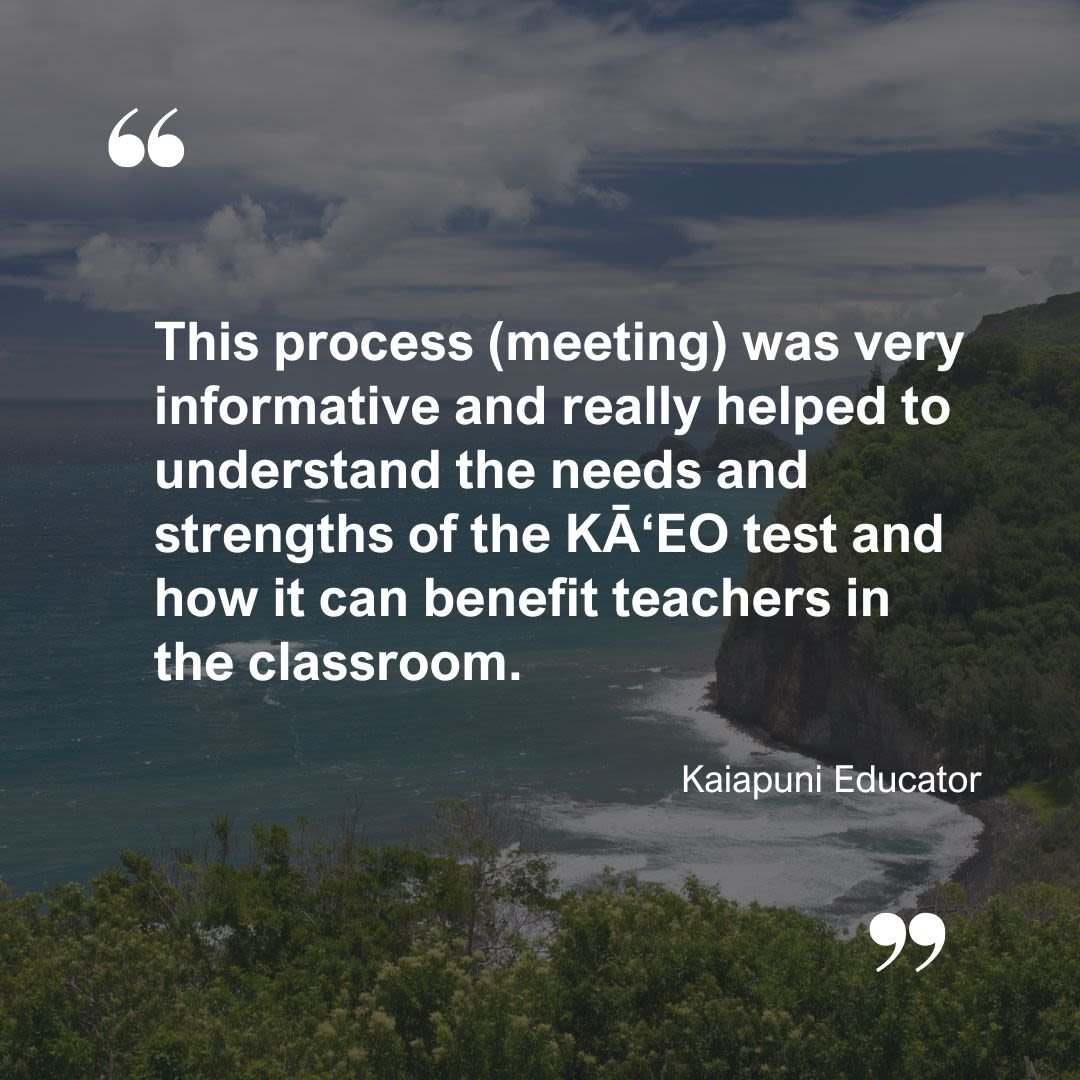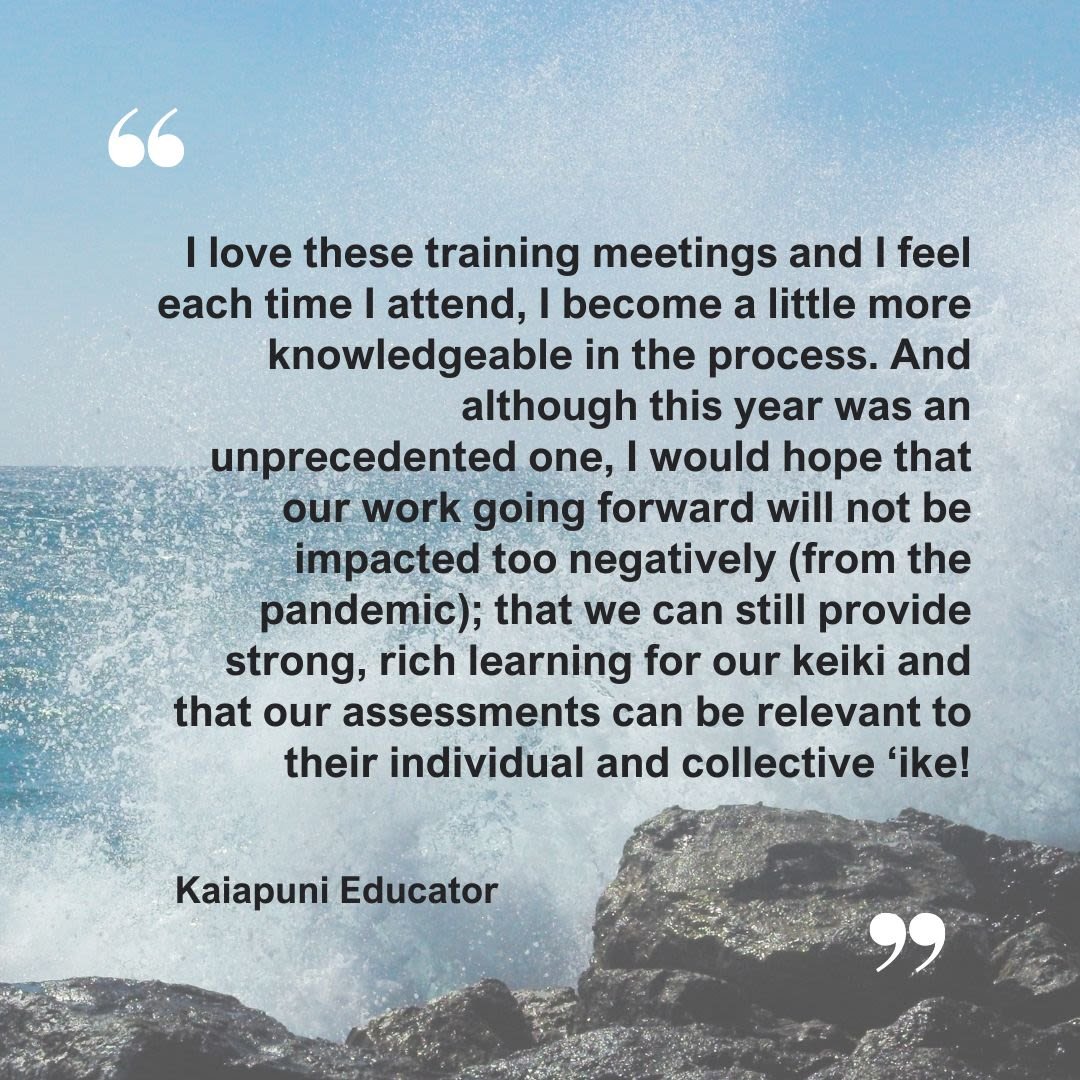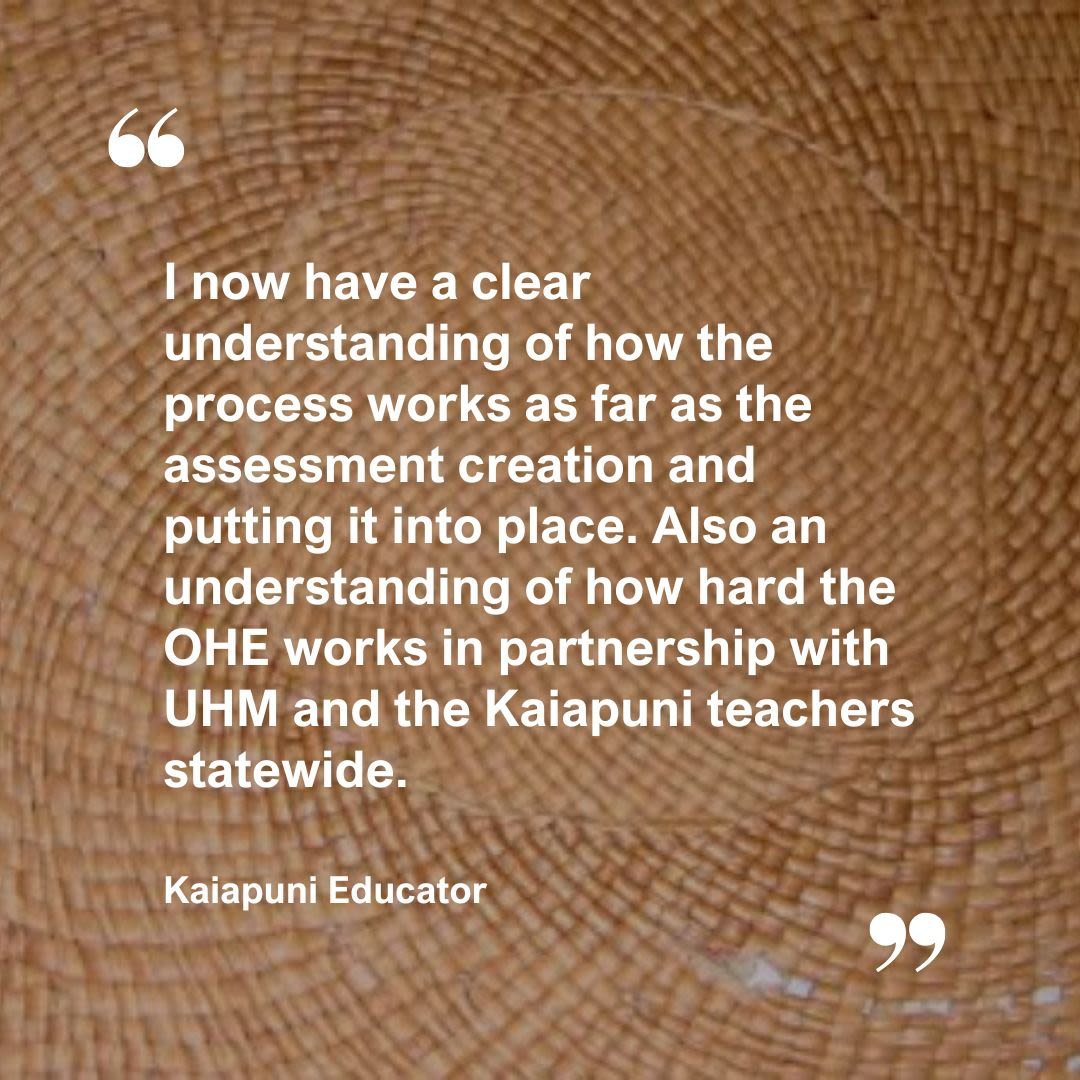How does KĀʻEO benefit students?
For years, Kaiapuni students were assessed using instruments that were technically inadequate or culturally insensitive. KĀʻEO is driven by the need to build fair, rigorous, and culturally sustaining assessments that showcase our students' knowledge. Kaiapuni teachers have expressed the collective work that they engage in on the KĀʻEO.
![A quote from a Kaiapuni Educator: [Our KĀʻEO work] allows us to have deep, state-wide conversations about how we both teach and assess the kids.](images/kaeo-benefit-quote1.png)

How does KĀʻEO benefit families?
The Foundational and Administrative Framework for Kaiapuni Education (FAFKE) outlines guiding theories for Hawaiian immersion assessment. The document outlines the importance of engaging families and community members in Kaiapuni schools and KĀʻEO provides opportunities for families and schools to create a dialogue on students' academic progress.
How does KĀʻEO benefit Kaiapuni teachers?
As a relatively new assessment program, KĀʻEO staff collaborate closely with all Kaiapuni schools and encourage their participation across all aspects of development. This includes educator meetings in standard setting, item writing, and item review which not only give educators a voice in directing KĀʻEO but also brings teachers together to share instructional practices and wisdom from their classrooms.


How does KĀʻEO benefit Kaiapuni schools?
For years, Kaiapuni students were educated and assessed using instruments that were translated from English assessments. As such, these assessments were not aligned to instruction or based on experiences of Kaiapuni students. This made it difficult for school staff to understand how their students were performing on the goals that were central to the Kaiapuni program. At one of the many training meetings held by the KĀʻEO team, a teacher reflected on the importance of a relevant assessment in supporting students.
How does KĀʻEO benefit the Hawaiian Language Immersion Community?
The University of Hawaiʻi team works tirelessly to ensure the assessment resonates with teachers by asking for input on an ongoing basis. The team has a philosophy that our development work can always improve and teacher feedback plays a central role in ensuring KĀʻEO supports language revitalization and cultural sustainability.
